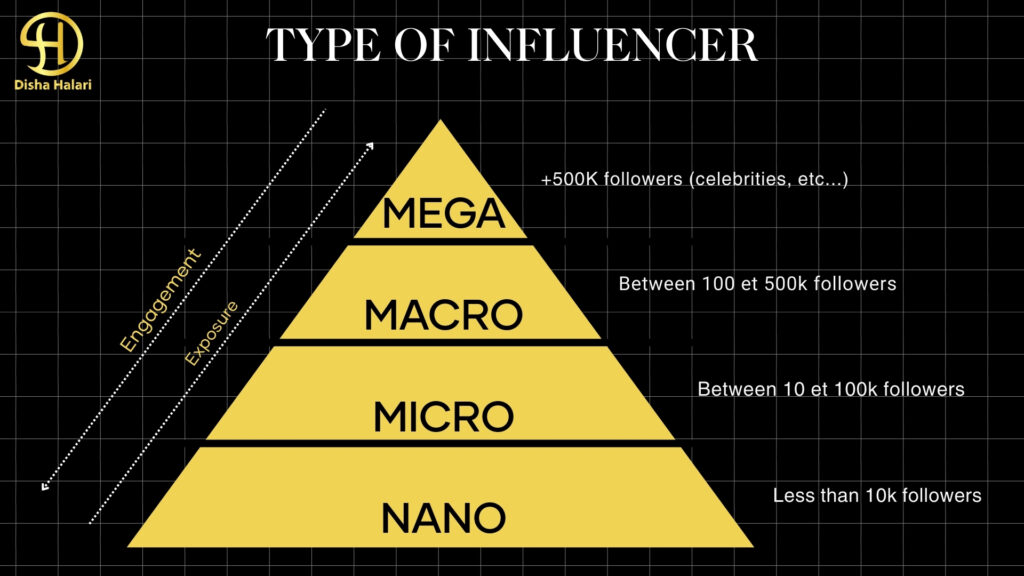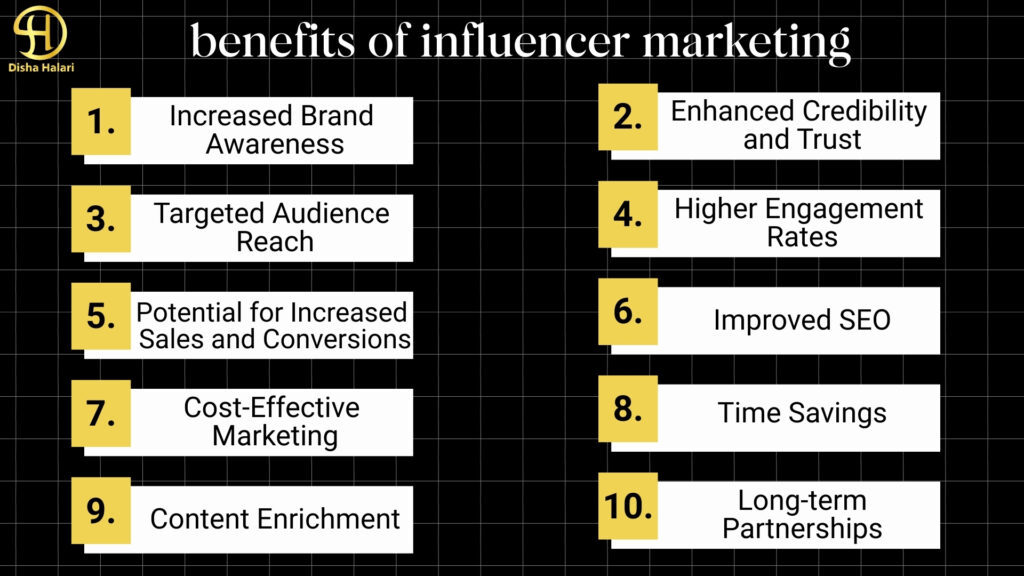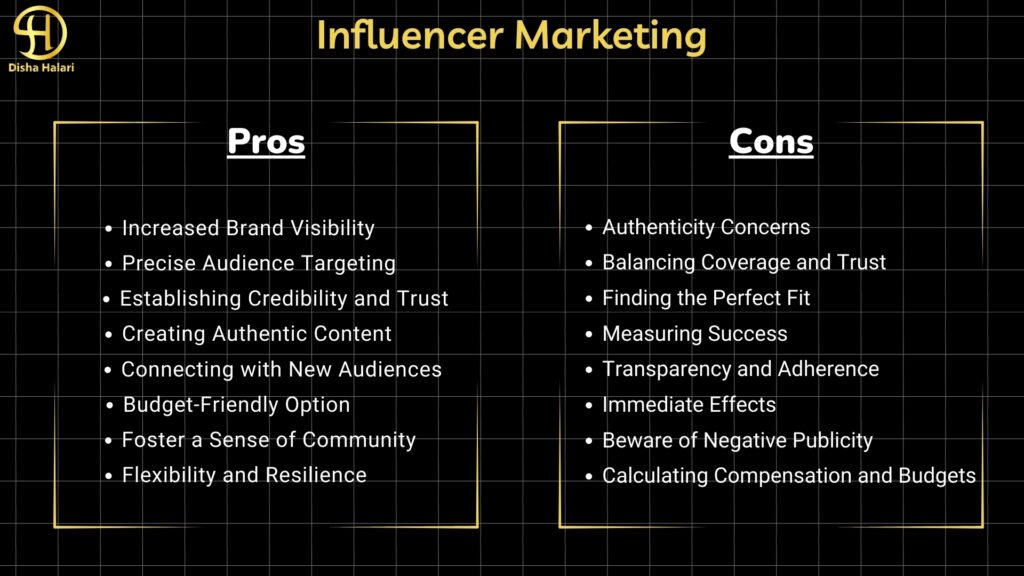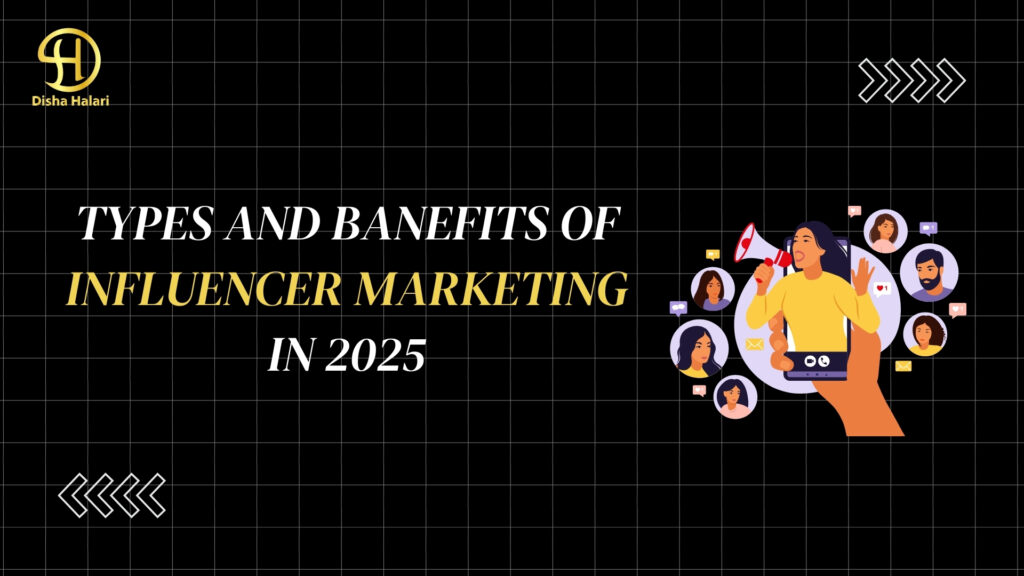Table of Contents
ToggleIntroduction:
Influencer marketing has shifted from being a trend to a necessity in 2025. You might be wondering, what is influencer marketing, and why is everyone talking about it? The answer’s pretty simple—it’s about using trusted voices to speak directly to audiences in a way that feels real. Whether it’s through Instagram reels, YouTube videos, or even podcasts, social media influencer marketing has changed how brands show up online.
But not all campaigns are the same. Understanding the different types of influencer marketing—from everyday creators to well-known personalities—can help shape your work influencer marketing strategy into something that actually delivers. People trust people more than ads, and that’s exactly why this method works so well.
Now, the benefits of influencer marketing? They go beyond likes and shares. We’re talking visibility, trust, and actual conversions. Of course, it’s not perfect—there are disadvantages of influencer marketing too, like poor targeting or inauthentic partnerships if not planned right.
Whether you’re managing it solo or using an influencer marketing service, understanding the real influencer marketing importance will set your brand up for success. Let’s break down how influencer marketing work in Digital Marketing Agency 2025—and why it’s only getting bigger.
What Is Influencer Marketing and How Does It Work in 2025?
Alright, let’s keep it simple. Influencer marketing is when a brand brushes up with someone who has an followership online — like an Instagrammer, YouTuber, or indeed a niche blogger. They partake your product with their followers in a way that feels honest, not like an announcement screaming “ buy now! ”
In 2025, this is not about hiring celebrities presently. It’s about authenticity. People want to hear from voices they trust, not polished advertisements. And the influencers who thrive at the moment? They’re the bones who keep it real with their followership.
So how does it actually work now? A brand finds someone whose followers match their ideal client. That person — let’s say a skincare creator — uses the product and shares their honest studies. Perhaps it’s in a casual “ get ready with me ” roll, or just a story talking about their experience.
And that’s the way it works. Why? Because it feels like a real recommendation, not a deal pitch. In 2025, people are tired of being tended to. Influencer marketing works because it does not feel like marketing.
The Growing Importance of Influencer Marketing in the Digital Era
Let’s face it—most people are eyeless to advertisements these days. Pop-ups? Skipped. Banners? Ignored. So how are brands supposed to reach actual people online? That’s where influencer marketing really comes in.
People follow creators because they like them. They trust their content, reviews, and stories. So when that creator mentions a product, it feels more like advice from a friend than some pushy ad. That’s the difference. And that’s why influencer marketing keeps becoming more essential every year.
In 2025, it’s not even about having the biggest following—it’s about having the right audience. A beauty creator with 20K engaged followers can drive more results than a celebrity with a million disconnected ones. Why? Because people are tired of fake promos. They want real.
Brands are finally getting this. They’re teaming up with influencers who actually use their products—not just pose with them. And honestly? That’s what makes it click. Because when marketing feels real, people tune in.
A smart digital marketing company knows how to tap into this authenticity. Influencer marketing isn’t just a trend anymore—it’s the new normal for how brands truly connect.
Types of Influencer Marketing: Which One Fits Your Brand in 2025?
Not every influencer is the same—and that’s actually a good thing. In 2025, there are different types of influencer marketing, and the key is finding the one that actually fits your brand.
Let’s break it down.
You’ve got mega influencers (celebrities or internet-famous folks with millions of followers). They give you reach, sure, but they’re pricey and sometimes not super personal. Then there are macro influencers—think content creators with big audiences who are known in their niche. Still powerful, but with a bit more connection.
Then there’s where the magic really happens: micro and nano influencers. These are everyday people with smaller followings, but their engagement is often off the charts. Their audience trusts them. The audience will most likely enjoy your work too.
There’s also affiliate influencers—creators who promote your product and get paid a commission for sales. And finally, brand ambassadors—loyal fans who consistently share your product because they genuinely believe in it.
Choosing the right type depends on your goals. Want massive reach? Go macro. Want deep trust? Micro’s your best bet.
The bottom line? There’s no one-size-fits-all. It’s about matching your product with the voice that makes the most sense.

Crafting a Work Influencer Marketing Strategy That Converts
Let’s be honest. Trying to get results using engaging influencers? That’s not a strategy. It’s guesswork. If you really want influencer marketing to bring in results in 2025, you’ve got to treat it like any other part of your business — with a plan.
Start with one simple question: What’s the goal? Do you want people to click on a link? Buy something? Just recognize your name? Know your “why” before anything else.
Next — and this is important — stop chasing big numbers. Focus on who connects with your kind of audience. A small creator who really vibes with their community can do way more for your brand than a big name who’s just doing another ad.
When it comes to content, give them room to be themselves. Seriously. If you want results, let creators speak in their own voice. Their audience trusts them for that reason alone.
Last thing — track the right stuff. Not just likes. Look at clicks, saves, comments, even sales. Then adjust.
You don’t need a massive budget to make influencer marketing work. You just need a thoughtful, honest approach.
Top Benefits of Influencer Marketing for Modern Businesses
If you’re running a business today, especially online, chances are you’ve thought about using influencers. And honestly? You should. The benefits of influencer marketing are too good to ignore—especially when it’s done right.
First off, it helps build real trust. People are way more likely to believe someone they follow over a brand ad. If a creator they like shows off your product and says they love it, that recommendation goes a long way.
It’s also super effective for targeting specific audiences. Whether you’re a skincare brand or a local café, there’s probably someone out there already talking to your exact customer base. Partnering with them means you’re not just reaching people—you’re reaching the right people.
And here’s a bonus: it’s usually more cost-effective than traditional ads. You’re not spending thousands on guessing—you’re investing in real connections.
One more thing? Influencer content sticks around. It gets saved, shared, and talked about. That kind of exposure can go far beyond one post.
In short, if you’re a modern brand looking to grow in a noisy world, influencer marketing isn’t just helpful—it’s one of your strongest tools.

Exploring the Advantages of Influencer Marketing in 2025
Okay, let’s be honest. If you’ve ever bought something just because someone on Instagram swore it changed their life — yeah, that’s the power of influencer marketing. And in 2025, it’s not going anywhere.
The biggest advantage of influencer marketing? It’s real. Or at least it feels real. We’re way past those glossy billboards and generic brand ads. Now, people want to hear from someone they follow, trust, and maybe even chat with in the DMs. That kind of connection? Ads can’t buy that.
Another plus? It works even if you’re not a big brand. You can team up with someone who has a tight-knit following — and that loyal crowd listens. That’s what makes this whole influencer marketing strategy so powerful. You’re not just selling — you’re having a conversation.
And here’s the kicker: the results are fast. You can see what’s working, what’s flopping, and adjust on the go.
In short, influencer marketing in 2025 is all about trust, relatability, and results. And when it’s done right, it’s honestly one of the smartest moves for any brand.
Understanding the Disadvantages of Influencer Marketing Before You Invest
Let’s be real — as much as influencer marketing sounds like a dream come true, it’s not always sunshine and sales. Before you throw your entire budget into collabs and shoutouts, it’s worth slowing down and looking at the full picture.
One of the biggest disadvantages of influencer marketing? You can’t always measure trust. Sure, a post might get likes, but that doesn’t guarantee sales. Sometimes, influencers create amazing content… and it just doesn’t convert. It happens.
Then there’s the issue of fake followers. Some influencers look huge on paper, but dig a little deeper and you’ll find bots and ghost accounts. That’s why choosing the right influencer marketing service or doing your own deep dive is super important.
Plus, if the content doesn’t feel authentic — people can smell it from a mile away. In fact, an incorrect fit can do more harm than help to your brand.
So yeah, influencer marketing in 2025 still works — but it’s not automatic. You’ve got to be smart about who you work with and how. Trust takes time. Additionally, a carefully considered work influencer marketing approach is crucial.

Why Social Media Influencer Marketing Is Still a Game Changer
Let’s be honest — we spend hours scrolling through reels, watching stories, and tapping through content without even realizing it. Somewhere between the memes and the morning routines, someone drops a product recommendation that just clicks. The draw of social media influencer marketing is that it looks more like a friend guide than an advertisement.
Even in 2025, when digital ads are everywhere, influencer content stands out because it blends into what we’re already consuming. Because it is an important part of the feed, it is not disruptive. And when the correct product is being discussed by the right person? Real influence occurs at that point.
Brands don’t need flashy commercials anymore — they need authenticity. A relatable creator, sharing a story or result, often drives more trust than a full-blown marketing campaign. That’s what keeps this strategy relevant.
Whether you’re partnering with niche creators or big-name influencers, this type of marketing works because people trust people. Not logos.
So yeah, if you’re thinking long-term, a smart work influencer marketing strategy on social media Marketing Strategy is still one of the most powerful tools in the digital kit.
Choosing the Right Influencer Marketing Service for Your Brand
Okay, let’s be real — choosing an influencer marketing service isn’t something you just Google and click the first link. It requires some research, some sense, and yes, some sort of trial and error. Because not every agency that says they “get it” actually does.
Start by figuring out your brand’s vibe. Are you outgoing and outspoken or more relaxed and revealing? The right service will match you with creators who fit your tone — not just ones with big numbers. Remember, influence isn’t just about reach; it’s about connection.
Ask yourself: does this team ask the right questions? Are they curious about your brand story? Do they offer a full work influencer marketing strategy or just hand you a list of names and walk away?
And don’t skip the vibes check. If it feels too pushy or templated, it probably is. The best agencies feel like collaborators, not vendors. They help shape campaigns that are authentic, not robotic.
At the end of the day, you want a partner who treats your brand like it matters — because it should.
Conclusion: Is Influencer Marketing Still Worth It in 2025?
influencer marketing has changed a lot. What worked back in 2019 looks nothing like the strategies we’re seeing now. In 2025, is it still useful? To be honest? In reality, it is. However, only if you do it correctly.
These days, it’s less about getting your product in front of a million eyeballs and more about showing up in the right space with the right voice. People are smart—they know when something’s authentic and when it’s just a paid plug. That’s why smart brands are investing in creators who actually connect with their audiences.
When you build a solid work influencer marketing strategy, team up with the right people, and stay true to your brand voice, the results can be real: trust, engagement, and long-term value. And that’s something algorithms can’t fake.
Of course, it’s not perfect. There are costs, risks, and even some disadvantages of influencer marketing to think about. But if you’re in it for the long game—not just the likes—it’s absolutely still a game worth playing.
So, yeah… influencer marketing in 2025? Still relevant. Still powerful. Still human.
F.A.Q. Types And Benefits of Influencer Marketing
Q1: What are the 3 R's of influencer marketing?
In influencer marketing, the “3 R’s” stand for Relevance, Reach, and Resonance. Relevance means how well an influencer’s content matches your brand values and target audience. Reach is about the number of followers or viewers an influencer can connect you with. And resonance is the ability to actually engage that audience—getting likes, comments, shares, or conversations going. When all three line up, you’ve got a campaign that doesn’t just show up in feeds, but actually connects. That’s what makes influencer marketing work well—it feels personal, not like an ad.
Q2: What is the meaning of influencer marketing?
Influencer marketing is when brands partner with popular social media personalities to promote their products or services. It’s not just about having a large following — it’s about working with influencers whose audience trusts their opinion. These influencers create content that showcases your product in a way that resonates with their followers. This type of marketing allows brands to tap into authentic, engaged communities rather than relying on traditional advertising methods. It’s all about real connections and genuine recommendations that drive results.
Q3: How is influencer marketing paid?
Influencer marketing payments vary based on the influencer’s reach, type of content, and the campaign goals. Generally, influencers get paid in a few ways: a fixed fee for sponsored posts, commission through affiliate links (they earn a cut of sales made through their referral), or free products in exchange for a review. In 2025, influencers are also exploring new ways to get compensated — like through subscription-based models or paid partnerships on social platforms. So, if you’re planning an influencer campaign, make sure to agree on the payment terms upfront.
Q4: Why is influencer marketing important?
Influencer marketing is important because it taps into trust. People tend to trust the recommendations of those they follow online, more than traditional ads. This form of marketing has proven to drive high engagement and conversions, especially in 2025, when social media continues to dominate. It allows brands to directly reach their target audience in an organic, non-intrusive way. With the right influencers, you can boost brand awareness, credibility, and sales while building a deeper connection with potential customers.
Q5: What is influencer marketing theory?
Influencer marketing theory revolves around the idea that consumers are more likely to make purchase decisions based on recommendations from trusted individuals, rather than brands themselves. This theory is grounded in social proof and word of mouth, which show that people tend to follow others they admire or relate to. In essence, influencer marketing theory suggests that these influencers act as modern-day “word-of-mouth” marketers. They play a key role in shaping purchasing behavior by creating trust and authority within their niche communities.
Q6: What is the key to influencer marketing?
The key to influencer marketing is authenticity. It’s essential to partner with influencers who genuinely believe in your brand and can integrate your product into their content in an organic way. The right influencer for your brand should naturally align with your message and audience. When the influencer’s audience sees them authentically using your product, it builds trust. Also, measuring the effectiveness of the campaign through metrics like engagement and conversions helps ensure you’re on track for success.
Q7: Why use influencer marketing?
Using influencer marketing offers brands a unique way to connect with potential customers on a deeper level. By working with influencers who already have a trusted relationship with their audience, you’re able to reach a highly engaged group of people in an authentic way. Plus, influencer marketing can be more cost-effective than traditional advertising methods, and it offers excellent ROI if executed well. It’s especially beneficial for brand awareness, driving traffic, and boosting conversions, all while tapping into a community that’s genuinely interested in your product.


